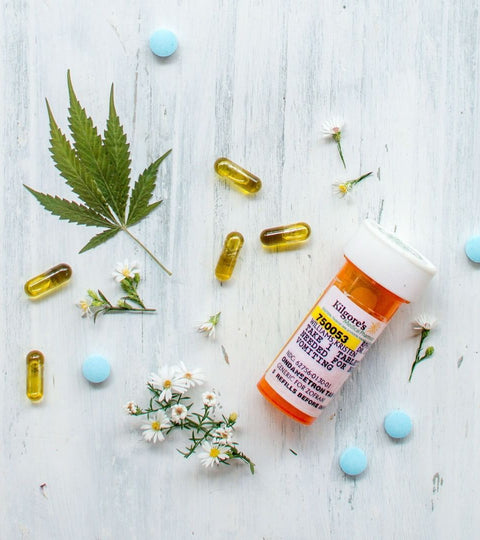What Are The Best Ways To Use Cannabis?
There are advantages and disadvantages to consuming medical cannabis via smoking, edibles, tinctures, and other ways to use cannabis. Examine the benefits and challenges of each method of administration to determine which one is best for you.
The State of Cannabis Today
Across America, more states each year legalize medical cannabis.
As of 2019, 33 states offer medical cannabis to qualified patients. Ten of these also offer cannabis’ therapeutic benefits without a prescription to any adult citizen age 21 or over.
This past November, Massachusetts Medical Cannabis Dispensaries ushered in the first adult use sales on the east coast.
As medical cannabis and now recreational cannabis become more available throughout the United States as a therapeutic substance, pharmacists, physicians, patients, and enthusiasts alike should familiarize themselves with the different ways to use cannabis.
The Science Behind Cannabis
This article will break down a few ways cannabis may enter your body. For each route of administration, we will highlight a specific ailment that the particular delivery method may aid.Before doing so, however, we must understand the science behind cannabis.
Specifically, we must learn about cannabis’ pharmacokinetics.
Cannabis interacts with your body’s endocannabinoid system, or ECS, to create psychoactive effects.
When considering psychoactive drugs like cannabis, common parlance often assumes the high is the result of the drug’s effects on your body.
However, that only tells part of the story.
Medical cannabis’ therapeutic benefits depend greatly on the body’s effect on the drug, or pharmacokinetics.
Important for our purposes, pharmacokinetics deal specifically with how drugs move throughout your body, from beginning to end.
As described in the caption, there is an internal structure in your body called the endocannabinoid system, or ECS.
The ECS is involved in many regulatory activities, like appetite, pain sensation, mood, and memory.
When ingested, medical cannabis meets your body’s ECS and binds with its receptors. The combinations of binding and blocking receptors in the ECS creates medical cannabis’ psychoactive effects, which lead to its therapeutic benefits.

The most commonly recognized of the different ways to use cannabis, medical or otherwise, is cannabis smoke. Photo by @whitsmoketrails
Ways To Use Cannabis: Smoking
Famous throughout popular culture in images of joints and bongs, smoking cannabis was probably the first well-known way of the many ways to use cannabis.Its efficiency, ease of access, and length of therapeutic effect make this simple method the most used delivery method for medical cannabis by patients and enthusiasts alike.
But what goes on when you smoke medical cannabis and how does it elicit therapeutic effects?
First, we must consider smokable cannabis’ bioavailability.
Bioavailability concerns the “degree to which a drug or other substance becomes available to the target tissue after administration,” according to the American Heritage Medical Dictionary.
Bioavailability is measured from 0-100%. Intravenous drug use, for instance, has a 100% bioavailability, as 100% of the drug is available to the brain via the bloodstream.
If you don’t ingest a drug, or if you try and fail to ingest a drug, then that route of administration has 0% bioavailability.
Cannabis smoke’s bioavailability falls somewhere between 10%-25%, with 50% of medical cannabis’ THC delivered through the smoke, half of which is exhaled. Of the absorbed smoke, 60% of it is metabolized.
Although much smoke and THC is wasted, this route offers the quickest onset of therapeutic effects, as they occur within minutes of inhalation.
The quick-acting effects of smoked cannabis may be important for those suffering from HIV, who often become nauseous in the morning and need a quick remedy in order to start their day.
Moreover, inhaled cannabis smoke actually acts a bronchodilator due to the cannabis terpene Pinene, which helps expand the lungs, helpful for those with asthma.
Contrary to popular belief, when controlled for tobacco and other drug use, longitudinal studies show no link between cannabis smoke and lung cancer. They speculate that medical cannabis’ anti-inflammatory properties may prevent lung irritation from occurring.
Ways To Use Cannabis: Edibles
Edible forms of medical cannabis create effects that take longer to appear but are longer lasting.“Special Brownies” are perhaps the second most remembered image of cannabis in popular culture. They appeared in movies and were referenced on TV shows and sitcoms, with the ever apparent warning not to eat too many or eat them unknowingly.
Today, edibles represent an entire subset of the cannabis industry.
For many medical cannabis patients, smoking isn’t an option, so edibles are one of their most popular ways to use cannabis.
While not every edible is the same in terms of dosage, size, or even caloric intake, they offer on average a bioavailability between 5 to 20%.
Edibles have only about 30% of smokable forms' efficacy. This is because of “first pass” effects, wherein your body metabolizes a good portion of the THC in your stomach before it reaches your bloodstream.
That being said, edibles reach their peak concentration in your body within one to three hours after consumption, increasing the length of the effects.
In comparison, you may reach peak concentration minutes after smoking medical cannabis.
This longer length of onset is advantageous for those who suffer from chronic pain throughout the night. Using an edible before you sleep may be the perfect way to combat the pain without having to wake.
Edibles also work wonders for those who suffer from lung conditions, or whose lungs are sensitive to smoke.
Ways To Use Cannabis: Tinctures
Last but not least, we should take a look at medical cannabis’ sublingual route of administration. Tinctures are a method of administration where medicine is dissolved into an alcohol liquid, to be applied onto the patient’s tongue.Tinctures act as the meeting point between smokable and edible forms of medical cannabis, as they are a bit more effective and powerful than edibles, but not as fast acting as cannabis smoke.
While edibles have a minimum bioavailability of 5%, the average bioavailability of tincture forms of medical cannabis sits at 18%, creating more efficacious therapeutic benefits than edibles alone.
Moreover, these benefits occur faster, as THC can be found in patients' blood only 15 minutes after tinctures were administered, whereas it can take up to an hour for edibles.
Tinctures provide a more concentrated version of an edible, which acts quicker and provides the same effects more consistently, and with more consistent dosing.
One of the biggest problems with edibles is knowing how much to eat, so tincture eye dropper measurements make a big difference for accurate dosing.
Conclusion
While there are plenty of different ways to use cannabis, it’s important to note that not everyone experiences cannabis the same way, as our endocannabinoid systems vary, as well as our tolerance levels and other factors.That being said, it’s important to try and find out which of these ways to use cannabis works best for you.
How do you take your medical cannabis? Let us know.
_
Photos by @hempsleyhealth
About the Author
Chris Matich is a professional writer, journalist, and editor living in Pittsburgh, PA. Chris blogs for Schenley.net. His writing interests include LGBT+ people/issues, sports writing, and blogging. Chris currently writes about web optimization, blogging practices, medical cannabis, and cannabis lifestyle. He writes fiction and creative nonfiction in his spare time.


